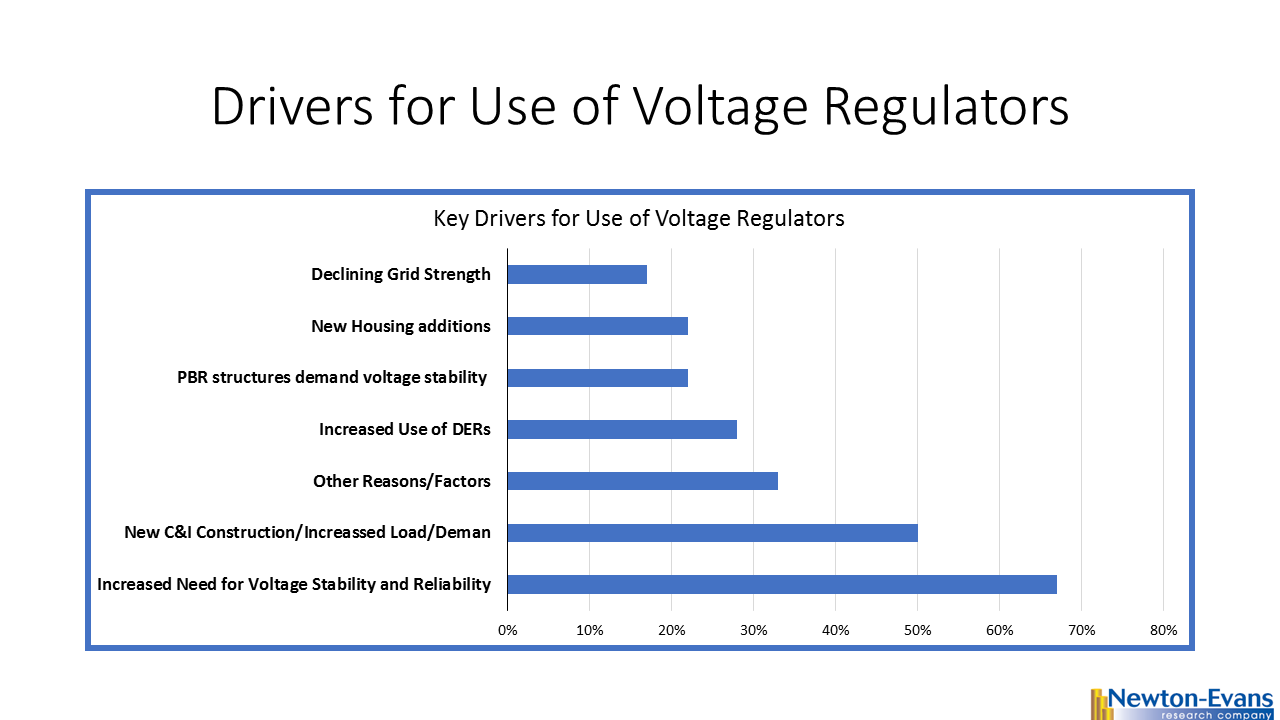Preliminary Findings Suggest Increased Reliance on VRs Likely Given the Continuing Growth in Use of DERs and PBRs
August 4, 2020. Ellicott City, Maryland. The Newton-Evans Research Company is conducting a major study of usage, trends and plans for voltage regulators used to assist in maintaining voltage stability and reliability across the North American grid.
While the use of single-phase VRs can be found among all types and sizes of electric utilities across North America, three-phase units tend to be found primarily among larger investor-owned utilities, and among some G&T cooperatives.
The key drivers for using VRs in the distribution grid today are led by the increased requirements for voltage stability and reliability, as reported in the responses from two-thirds of the initial 20 utility participants to date. Importantly, C&I construction activities, linked with subsequent increases in load/demand, also have been ranked highly as a driver for increased use of VRs. In addition, the increased implementation of DERs on the grid, a key factor in today’s grid voltage fluctuations, provide yet another key reason for using VRs to help provide grid stabilization.
 Additional topics being studied include phase-to-ground voltages used in conjunction with VR; the use of VRs with other voltage improvement devices such as distribution feeder capacitors and substations capacitors; purchasing methods and preferences; installation methods, requirements for unit compliance with the latest IEEE requirements, wish lists for new VR product capabilities and a number of other pertinent topics.
Additional topics being studied include phase-to-ground voltages used in conjunction with VR; the use of VRs with other voltage improvement devices such as distribution feeder capacitors and substations capacitors; purchasing methods and preferences; installation methods, requirements for unit compliance with the latest IEEE requirements, wish lists for new VR product capabilities and a number of other pertinent topics.
For utility engineering and operations personnel who may wish to participate in the study, please send an email request to cnewton@newton-evans.com and a survey link will be forwarded. Findings will be shared with participants. All submissions are held in confidence. Only aggregated information is used in report preparation.

 summary reviews and highlights from completed studies
summary reviews and highlights from completed studies
